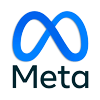Collecting online data is becoming increasingly challenging due to changes in privacy laws and technological advances. Traditional methods, such as the use of cookies, are becoming obsolete. Google has announced that tracking cookies, including third-party and cross-domain cookies, will disappear within a few years. Although the deadline for this has been postponed several times, it is clear that companies must adapt to this new reality.
What is Server Side Tagging?
Server Side Tagging (SST) is a modern data collection method where tracking codes are no longer loaded directly into the user's browser (client-side), but through the website owner's server. Instead of sending user data directly to external platforms such as Google Analytics or Google Ads, SST creates an intermediate layer. Data is first sent to your own server, where you can decide what information to share and with which parties.
Why would you want to use Server Side Tracking?
The shift to SST is not only a response to technical limitations, but also to growing concerns about privacy:
- More data at your disposal: Due to restrictions such as ad-blockers and browser settings, up to 30% of the data is currently lost. SST bypasses these limitations, allowing you to collect more and more reliable data. This is crucial for optimizing marketing campaigns and improving your Return on Investment (ROI).
- AVG-proof: With SST you comply with the General Data Protection Regulation (AVG). Because you manage the data on your own server, preferably within the EU, you prevent unwanted sharing of user data with third parties or foreign governments.
- Faster website: Reducing client-side scripts speeds up the loading time of your website. A faster site improves the user experience and can positively affect your search engine rankings.
- More control over your data: You control what data is collected and shared. This is especially important in industries that process sensitive information, such as healthcare or government services.
- Greater flexibility: SST makes it easier to integrate and manage data from different sources. For example, you can combine conversion data with your CRM system, leading to more informed decisions and more effective marketing strategies.
Are there any drawbacks?
While SST offers many benefits, there are some concerns:
- Limited compatibility: Not all software currently supports SST. For example, tools such as Hotjar can only be implemented via client-side tagging.
- Complexity: Setting up SST is more technically challenging than traditional tagging. Less documentation is available, which can increase the learning curve.
- Cost: It requires additional server space, which can lead to higher operating costs. Hosting through platforms such as Google Cloud starts at about €120 per month. However, alternatives such as TAGGRS offer cheaper solutions starting at €25 per month.
What is the difference between a web container and a server container?
- Web container: In it, tags and scripts are sent directly to the user's browser. Data is sent directly from the website to external services.
- Server container: Data is sent to your own server first. You have full control over what information is forwarded to external platforms. This increases privacy and reduces the risk of data loss.
Future changes in legislation
Traditional client-side tagging methods are expected to come under pressure from stricter privacy laws. This could lead to these methods being banned in the future. By switching to SST now, you anticipate these changes and ensure that your business remains compliant.
How do you get started with server side tagging?
Implementing SST can be complex, but with the right steps it becomes manageable:
- Google Tag Manager Web container setup: This is the basis for managing your tags.
- Implement any Datalayer: Especially useful for e-commerce sites for tracking transactions.
- Google Tag Manager Server container setup: This is where you manage the server-side scripts.
- Configure subdomain for your server: For example,
data.yourcompany.com. - Arrange server hosting: You need a server to process the data. This can be done through Google Cloud or specialized services such as TAGGRS.
Platforms like TAGGRS guide you step by step through this process, allowing you to get started even without deep technical knowledge.
Start transitioning to server side tagging
Don't wait to fall behind the competition. By starting now with SST:
- Prevent your data loss: Continue to get valuable insights from your marketing efforts.
- Stay compliant: Comply with current and future privacy laws.
- Optimize your performance: Improve the speed and efficiency of your website and campaigns.
Frequently Asked Questions
- What if I don't make the switch to SST? You run the risk of significant data loss, which hurts the effectiveness of your marketing campaigns. In addition, you may be in violation of the AVG, which could have legal consequences.
- Do I still need a cookie banner? Yes, even though SST is more privacy-friendly, you still collect data from users. Transparency about this remains a legal requirement.
- How much additional revenue does SST generate? While this varies by company, better data leads to better optimized campaigns, typically resulting in higher conversions and revenue.
Are the results from your online marketing disappointing?
Request our no-obligation performance scan and we'll tell you where you're going wrong.

















 Team
Team FAQ
FAQ Vacancies
Vacancies Contac
Contac AWR
AWR Ahrefs
Ahrefs Channable
Channable ContentKing
ContentKing Leadinfo
Leadinfo Optmyzr
Optmyzr Qooqie
Qooqie Hubspo
Hubspo Semrush
Semrush

